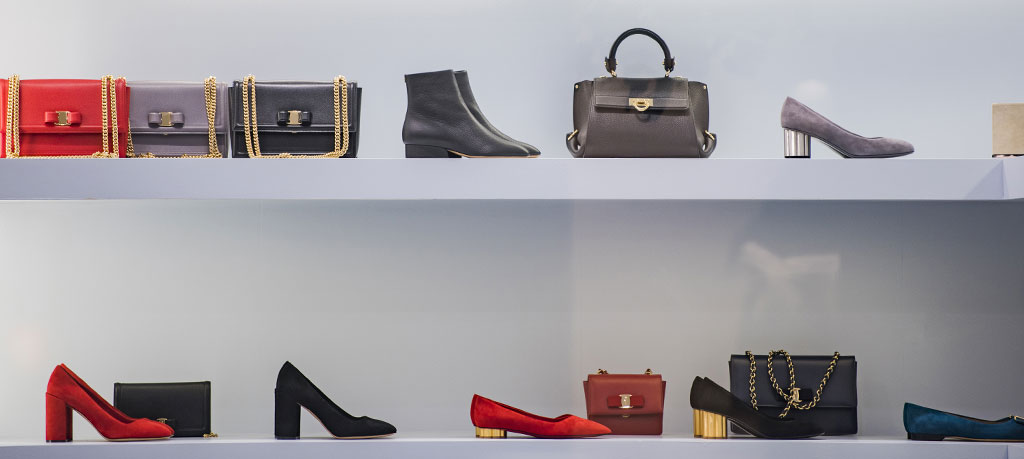By Lisa Gulbin, Director of Visual Merchandising at Pandora
Imagine this: A consumer sees a high-end designer leather bag on the arm of her favorite Instagram celebrity and falls in love. She does some online research and then heads to the brand’s retail location, looking forward to a premium shopping experience.
When she gets there, the store feels cluttered, and she wonders for a moment if she’s in the wrong place. She wants to hunt for that leather bag she saw online, but when she finds it, it’s on a crowded shelf with two others just like it.
Suddenly, it doesn’t look so luxurious anymore.
This kind of disconnect in the luxury goods space is more common than you might think, and it costs luxury retailers $10 billion per year in lost revenue.
“Companies spend millions on brand strategy and marketing campaigns,” says Lisa Gulbin, the Director of Global Visual Merchandising for Pandora. “But if they can’t execute it properly at the point of sale, it’s all for nothing.”
Consumers do much more research ahead of time than they used to, Gulbin notes, and are much more aware of brand image, thanks to ubiquitous advertising. They expect a seamless, memorable experience that reflects the cachet of the brand they choose.
Unfortunately, many high-end brands rely on outdated tools and technology that make it difficult to achieve this kind of consistency in every store. They also lack a methodical way to evaluate how their in-store visual merchandising execution affects sales.
In our experience, it boils down to three basic problems:
Communication Breakdown
Many global luxury brands still rely on “tried and true” (read: old) methods of planning and communication for their visual merchandising:
- PDF floorplans and planograms sent via email
- Platforms like Sharepoint or Dropbox
- Big batches of photo attachments or photo galleries
- Messages back and forth via email or project management software
For store teams tasked with executing visual merchandising plans, piecing together all of this disparate information and trying to keep on top of email threads and document versions is a recipe for chaos.
It’s all too easy for important information to fall through the cracks, resulting in inaccurate execution at the store level.
One-Size-Fits-All Planogramming
Luxury goods stores aren’t like big box retailers with plug-and-play store layouts. Shops may be located in everything from historic buildings to high-end malls to international airports. They have their own unique footprints, fixtures, and architectural considerations.
When store teams can’t quickly access planograms and photos customized by store and region, it can lead to confusion and errors. Without a platform for real-time communication, there’s no easy way for store teams to get the clarification they need from corporate.
Hence, that aforementioned leather bag ended up on a shelf that’s smaller than what’s in the plan HQ sent — and looking lackluster as a result.
Lack of Insight
Ownership and accountability are key when it comes to ensuring that visual merchandising is properly executed. Without a feedback loop where employees can easily provide proof of compliance, there’s no way for leadership to evaluate what is and isn’t being done properly and identify where processes need improvement.
There’s also no way to see how visual merchandising plans and store execution impact sales. Sales may be lagging in a certain store due to poor execution, but without proof of what’s happening on the floor and on the shelves in that location, HQ remains in the dark.
The Solution
The solution to all these challenges for luxury retailers is organized, real-time communication; store-specific planning; and accountability that yields insight.
The good news for luxury retailers is that platforms like One Door can address the pain points of visual merchandising.
According to Gulbin, “When you have a repository for store-specific plans and photos and information in one place—a platform that’s dynamic and allows for collaboration in real time—you get alignment immediately.”
“That speed is important because you want to be able to move quickly and try things out. You can monitor your sales, see what works, and then pivot quickly to try something else.”
The ultimate goal, she says, is for store teams not to have to work so hard to get sales. Visual merchandising should do the work.
There’s nothing luxurious about using outdated technology and processes to create premium retail experiences.
Learn more about how quintessential visual merchandising is to luxury retail (and what happens when it’s not prioritized) in One Door’s guide, The Cost of Poor Visual Merchandising: The $125 Billion Challenge for Retailers.
About Lisa Gulbin
Lisa Gulbin is a global luxury and lifestyle goods executive with expertise in visual merchandising, new store development, in-store brand experience, and product presentation. She has worked with many well-known luxury brands, such as Ralph Lauren and J.Crew, and served as the former Director of Global Visual Merchandising at Tiffany & Co.
